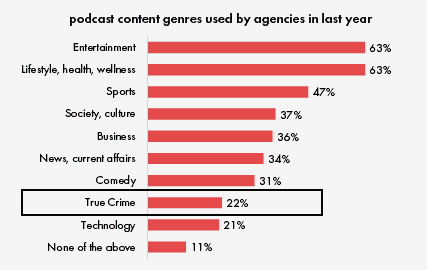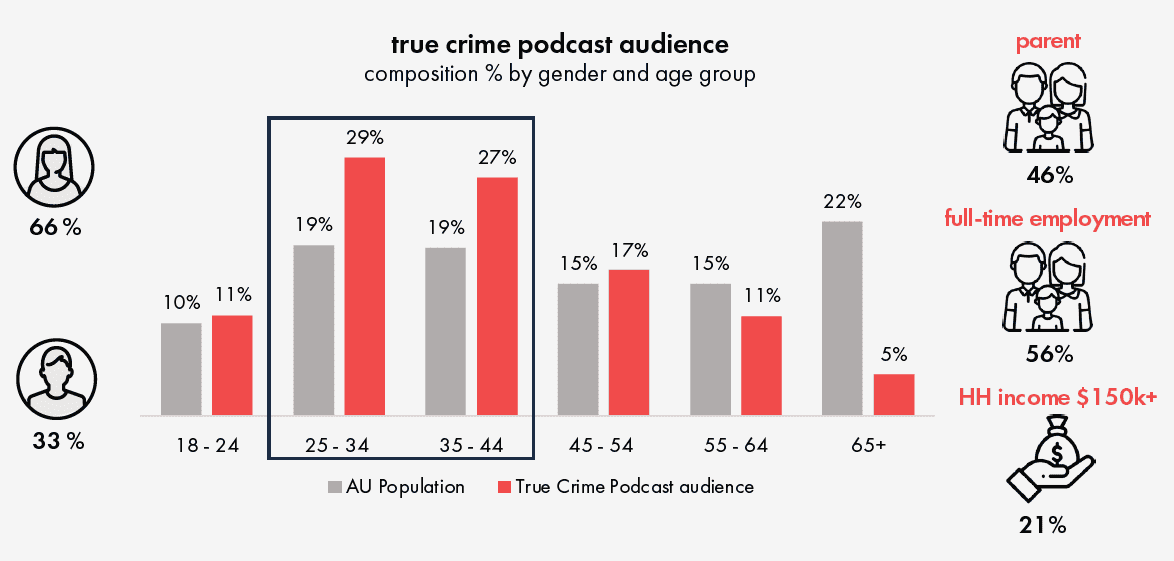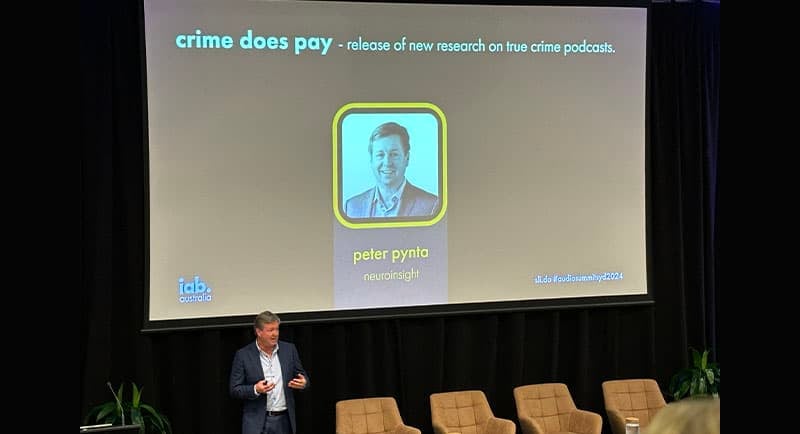The true crime genre delivers advertisers’ engagement and memorability at levels known to be effective in influencing consumer decisions and changing behaviour, global-first neuroscience research has revealed.
Unveiled on Wednesday at IAB Australia’s eighth annual Audio Summit, Crime Pays: Guide to Understanding True Crime Podcast Audiences and Advertising Opportunities report showed the impact of the genre for advertisers and audiences.
It was created in partnership with IAB Australia and neuro-marketing and neuro-analytics company, Neuro-Insight. The report was supported by Acast, ARN, Eardrum, NewsCast, Nine, Nova, SCA, Triton Digital, and IAB Australia.
See Also: IAB Report: Agencies plan to increase their investment in audio
Despite the Triton Digital podcast ranker showing that five out of the top 20 podcasts in Australia in January 2024 were in the true crime genre – the third largest podcast category in Australia – advertisers have traditionally been reluctant to invest alongside the genre.
However, the report also found that – contrary to some industry concerns – true crime podcast campaigns are a safe and effective way for advertisers to engage, and they can expect the same level of engagement and memorability as they do for entertainment podcast campaigns.

The study was done by tracking participants’ brain activity while listening to podcast content and advertising. It then assessed responses in true crime and entertainment podcasts as well as benchmarking against Neuro-Insight’s database across wider media environments.
The research found that the unique attributes of the true crime podcast audience are categorised by a mindset of curiosity, learning, problem-solving, and understanding human behaviour.

Additionally, the neuro-state of true crime content is transferred to the advertising placed in it. Consequently, ad creative that matches the mood, mindset and motivations of true crime listeners can reinforce brand memorability to impact consumer decision-making and change behaviour.

Finally, the report shows that the profile of true crime podcast listeners provides an audience for advertisers across a wide range of brands, products, and services – not just brands with an obvious link to the genre.
Peter Pynta, principal consultant at Neuro-Insight said: “This is the first time we can see what has previously only been heard. The neuro data revealed a range of captivating patterns and relationships. Whilst true crime audience engagement exceeds our global media content benchmarks, the opportunities for advertisers in True Crime are broader and more compelling than we’d originally assumed.
“Whilst we always knew that quality creative was worth the effort, tuning into some of the broader environment attributes of this content measurably increases ad receptivity and effectiveness. This all makes the payback well worth the effort.”
Gai Le Roy CEO of IAB Australia added: “Australian media owners and content creators have been investing significant resources and time to research, investigate, develop, and report a range of incredibly rich and important true crime podcasts and in turn audiences have devoured these. I am thrilled that the new report, Crime Pays, proves that true crime podcasts provide an opportunity that advertisers should be considering in their media mix.”
–
Top Image: Peter Pynta presents at the IAB Audio Summit
